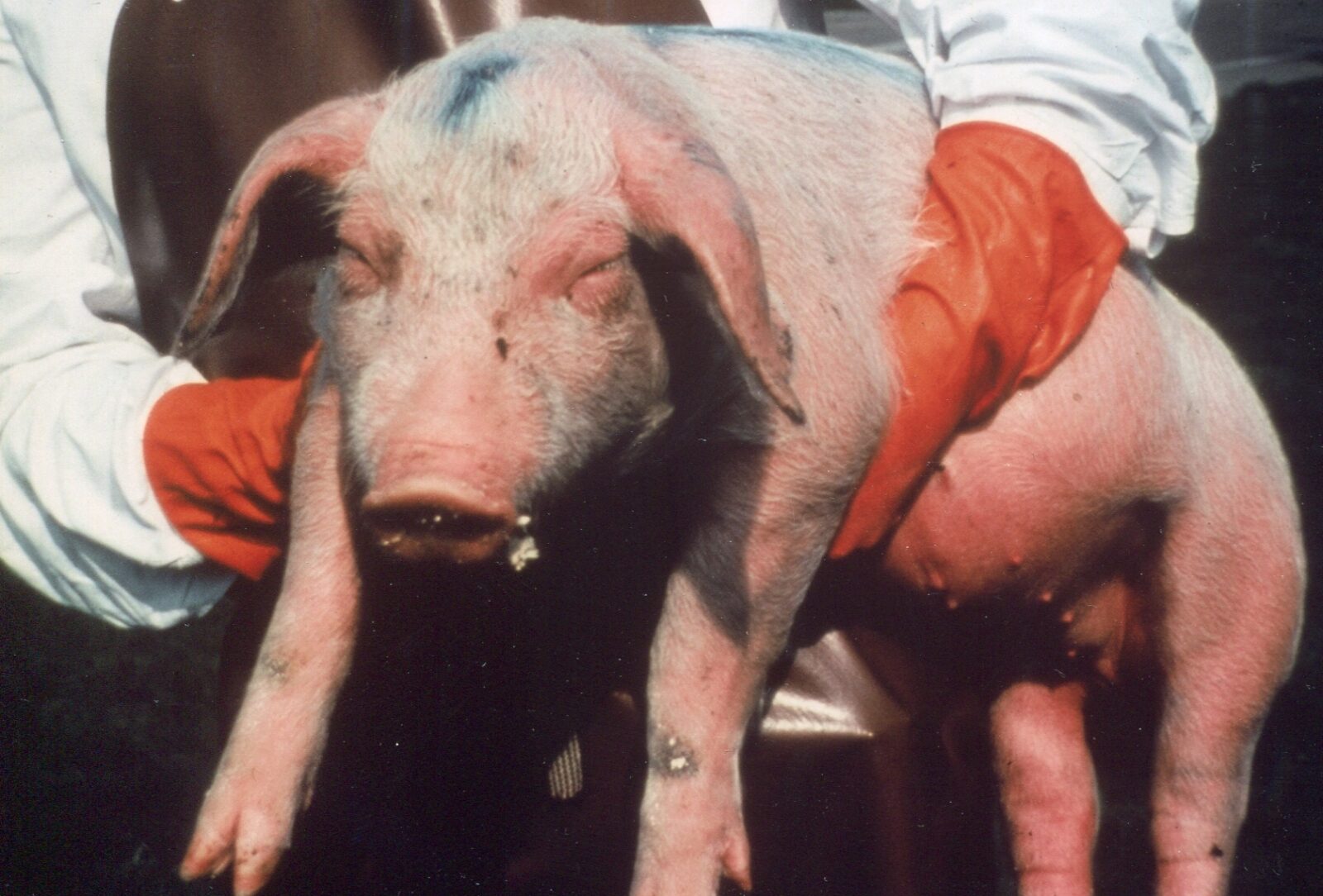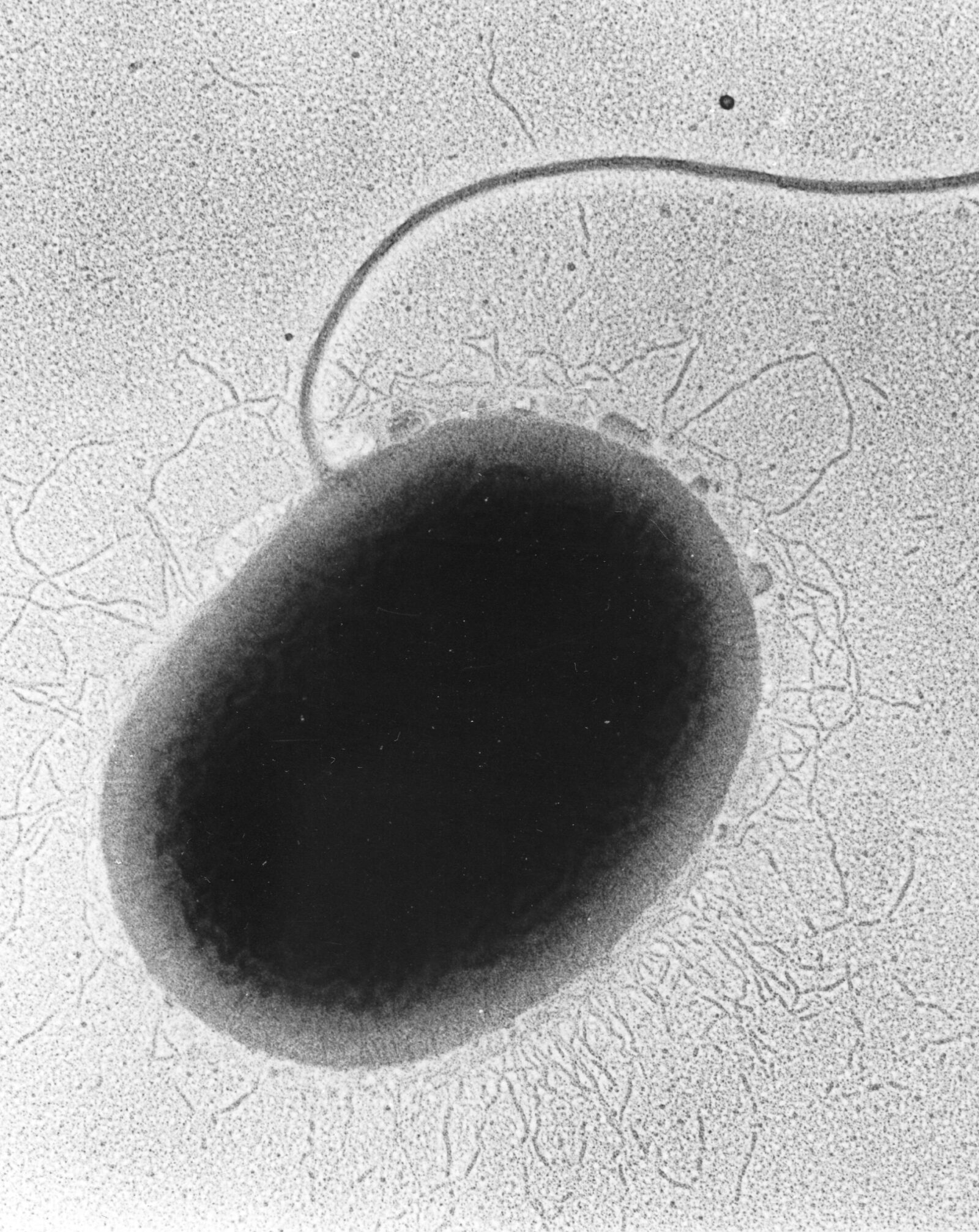Piglet diarrhoea and E. coli F18 resistance
Reminiscences by Professor Gerald Stranzinger
A piglet disease puzzled the researchers. Was diet to blame for the fatal disease or was it rather a genetic disposition? Thanks to the persistence of researchers at the Institute for Animal Breeding, the mystery was finally solved after many years.

Professor Hans-Ulrich Bertschinger, then Head of the Institute of Veterinary Bacteriology at the University of Zurich, told me in the 1990s about a piglet disease that manifests itself in oedema and diarrhoea during weaning and from which certain piglets in a litter die shortly after birth and others do not. In these cases, the breeders used antibiotics to save the piglets, but often unsuccessfully.
When ETH and the university join forces
At the time, Bertschinger, together with the Animal Nutrition group at ETH, was investigating whether the disease could be combated with feed additives. But success failed to materialise.
As a geneticist, I suspected it might be a genetic disposition. Bertschinger and Peter Vögeli, at that time Senior Assistant at the Institute for Animal Breeding, also started research in this direction. Bertschinger then carried out adhesion tests with the bacteria and small intestine cells in his laboratory. At the same time, Vögeli carried out marker analyses in the ETH blood group laboratory. The parent animals and all their live and dead piglets were examined. Biopsies of the intestinal tract were also taken from the dead piglets and the samples were examined for germs.
A mystery is solved
The research project was supported by the pig breeding organisations and the Swiss National Science Foundation for many years. I also supported the project financially and often defended it before the research commission. In fact, it took too long for the commission to get results. However, with the advent of molecular genetic markers in pigs, things became more interesting.
On our experimental farm, we had a herd of pigs that we had selected and bred for this disease. This meant that we always had animals available whose disposition we knew and we could breed the animals accordingly. A genetic disposition did indeed emerge. Certain animals were able to prevent E. coli germs from adhering to the intestinal epithelium. In other animals, the attached germs caused diarrhoea, which led to the death of the piglets. A segment on chromosome 6 of the pig was found to be associated with resistance to E. coli F18 infection. Based on these experiments, the FUT1 gene was further investigated as a potential candidate gene. By means of genetic analyses, we determined the exact localisation and structure of the said FUT1 gene, which plays a role in the adhesion of bacteria in the intestinal epithelium.

Stolen patent
ETH, with Peter Vögeli as the inventor, has patented this finding. However, an American researcher claimed to have found the same thing. However, we were convinced that this researcher had reviewed a paper submitted by us in a scientific journal (Mammalian Genome, 1997) and used our data for himself. It was impossible that he had worked out these results himself, as he did not have an experimental and selection herd available and therefore could not collect any data. However, it is very easy to apply for a patent in the USA. It is enough to present the patent without presenting any data or other evidence.
Due to our appeal, this researcher was dismissed from his university in the USA. Our patent was implemented worldwide (licences) and both my institute and ETH received a relatively large amount of money back from this research project.
For the good of the environment and health
My employees, Peter Vögeli and Stefan Neuenschwander with their doctoral students, and Hans-Ulrich Bertschinger had worked on this problem for 15 years until they found the solution. Swiss pig breeding has greatly benefited from this knowledge and its application in the selection of parent animals and has freed the population from this disease. These “healthy” animals have also caught the attention of foreign countries. This made the sale of breeding animals possible and the testing method was introduced worldwide. What is particularly significant, however, is that these findings mean that oedema and piglet diarrhoea no longer have to be treated with antibiotics. In this way, we have made an important contribution to the benefit of the environment and health with our research.